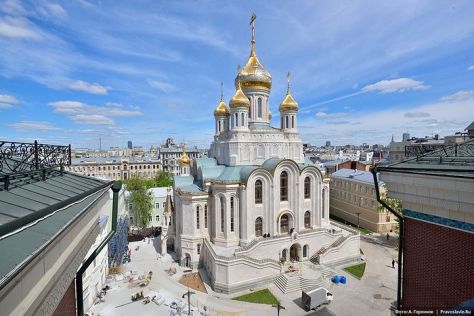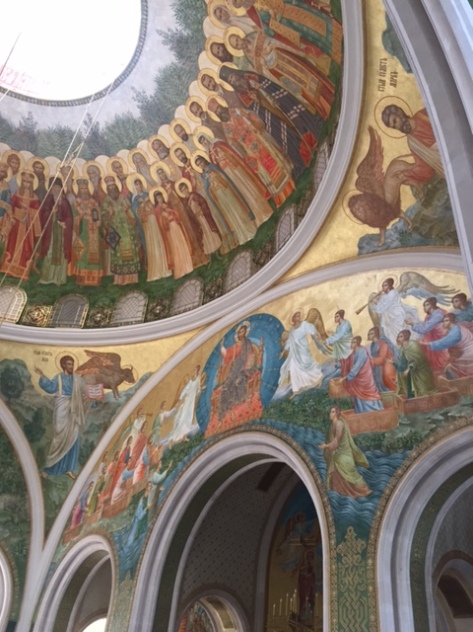
Paul Robinson
Paul Robinson is a professor in the Graduate School of Public and International Affairs at the University of Ottawa, and the author of numerous books on Russia and Soviet history, including 'Grand Duke Nikolai Nikolaevich: Supreme Commander of the Russian Army'
No doubt you have come across the opinion that Vladimir Putin is resurrecting the cult of Josef Stalin. An example is this recent comment in the Ottawa Citizen:
In Putin’s world, Stalin was the hero who liberated Europe and under whose leadership, the occupied Baltic States, Ukraine, Belarus and other Soviet satellites, prospered thanks to Soviet benevolence. Putin has crafted himself as Stalin’s heir, and as such, there’s little room for the ‘truth’ about the 30 million who were murdered by Stalin’s regime, let alone any other inconvenient fact about Soviet occupation or mass repression.
Last week, a few colleagues and I had the opportunity to assess how true this may be. On Sunday morning we visited the Sretenskii Monastery in downtown Moscow. Like many other institutions of the Orthodox Church, it was destroyed during the Soviet era. In November 2013, a decision was made to rebuild it, and just a little over three years later, in May 2017, the new church in the centre of the monastery was consecrated.

When we tried to go into the main church building, we found that only the basement chapel was open; the bulk of the church was closed as they were still working on the marble and one of the staircases. Fortunately, one of my colleagues was able to persuade somebody to let us in anyway and give us a guided tour. What we heard was quite remarkable.
The land on which the Sretenskii monastery stands used to belong to the Soviet secret services (known successively as the Cheka, OGPU, NKVD, MGB, and KGB), whose headquarters, the Lubyanka, is not far away. During the Great Terror, executions took place on the monastery grounds, our guide told us. Even today, all the buildings around the monastery remain in the possession of the post-Soviet security service, the FSB. The monastery is, therefore, surrounded by the organization which in a previous guise once tried to destroy Christianity in Russia.
The resurrected Sretenskii monastery is devoted to the New Martyrs – those thousands of Christians murdered by communists following the 1917 revolution. The new church’s decoration reflects this. Around the dome, for instance, are depictions of key saints of the Russian Orthodox Church, among whom are Emperor Nicholas II and his family, symbols of suffering at the hands of Bolshevism.

Behind and above the altar, one can see a depiction of Christ’s crucifixion. But around the cross are not merely the Virgin Mary and Mary Magdalene, but also some more of the New Martyrs. On the far right are a man and his two sons who initially supported the revolution and joined the Red Guards, but who then refused to renounce their Christian faith and were shot. On the left is, among others, Grand Duchess Elizabeth, who became a nun after the assassination of her husband Grand Duke Sergei, and who was murdered by the Bolsheviks in 1918. And on the far left is a woman who during the Great Terror brought food and clothes to those detained by the NKVD, until she in turn was arrested and shot.

There are no candles burning in the main church. Normally, there are two types – those lit for prayers for the dead, and those lit for prayers for the living. But the entire building is a prayer for the dead, and so, we were told, no candles are needed. During Orthodox services, the altar is covered with an ‘antimin’ – an altar cloth into which a relic of a martyr is sown. The entire church at Sretenskii is an antimin, our guide said – as it is built on an NKVD execution ground, the new martyrs are an integral part of it.
In May of this year, Vladimir Putin attended the service at which the church was consecrated. Our guide spoke of Putin as the former head of the FSB, the successor organization to the Soviet secret services who executed the New Martyrs. Our guide implied that by coming to the service, Putin in effect repented on behalf of those secret services and asked for forgiveness. There is little doubt in my mind that Putin understood perfectly what his presence symbolized and what message he was sending.
Sretensky monastery is a massive and striking monument to those murdered not just by Stalin’s regime, but also by Lenin’s. With the full personal backing of the Russian president, it repudiates those regimes’s crimes in the most forceful manner.



_jpg/250px-ElbeDay1945_(NARA_ww2-121).jpg)





